
A monastery is a building or complex of buildings comprising the domestic quarters and workplaces of monastics, monks or nuns, whether living in communities or alone (hermits). A monastery generally includes a place reserved for prayer which may be a chapel, church, or temple, and may also serve as an oratory, or in the case of communities anything from a single building housing only one senior and two or three junior monks or nuns, to vast complexes and estates housing tens or hundreds. A monastery complex typically comprises a number of buildings which include a church, dormitory, cloister, refectory, library, balneary and infirmary, and outlying granges. Depending on the location, the monastic order and the occupation of its inhabitants, the complex may also include a wide range of buildings that facilitate self-sufficiency and service to the community. These may include a hospice, a school, and a range of agricultural and manufacturing buildings such as a barn, a forge, or a brewery.

A hermit, also known as an eremite or solitary, is a person who lives in seclusion. Eremitism plays a role in a variety of religions.

The Black Madonna of Częstochowa, also known as Our Lady of Częstochowa is a venerated icon of the Blessed Virgin Mary housed at the Jasna Góra Monastery in Częstochowa, Poland.
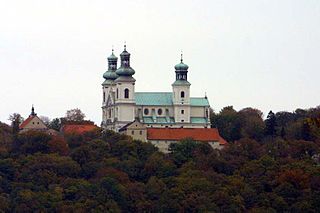
The Camaldolese Hermits of Mount Corona, commonly called Camaldolese, is a monastic order of Pontifical Right for men founded by Saint Romuald. Its name is derived from the Holy Hermitage of Camaldoli, high in the mountains of central Italy, near the city of Arezzo. Its members add the nominal letters E.C.M.C. after their names to indicate their membership in the congregation. Apart from the Roman Catholic monasteries, in recent times ecumenical Christian hermitages with a Camaldolese spirituality have arisen as well.

Christian monasticism is a religious way of life of Christians who live ascetic and typically cloistered lives that are dedicated to Christian worship. It began to develop early in the history of the Christian Church, modeled upon scriptural examples and ideals, including those in the Old Testament. It has come to be regulated by religious rules and, in modern times, the Canon law of the respective Christian denominations that have forms of monastic living. Those living the monastic life are known by the generic terms monks (men) and nuns (women). The word monk originated from the Greek μοναχός, itself from μόνος meaning 'alone'.

The Hieronymites or Jeronimites, also formally known as the Order of Saint Jerome, is a Catholic cloistered religious order and a common name for several congregations of hermit monks living according to the Rule of Saint Augustine, though the role principle of their lives is that of the 5th-century hermit and biblical scholar Jerome.

The Tironensian Order or the Order of Tiron was a medieval monastic order named after the location of the mother abbey in the woods of Thiron-Gardais in Perche, some 35 miles west of Chartres in France). They were popularly called "Grey Monks" because of their grey robes, which their spiritual cousins, the monks of Savigny, also wore.
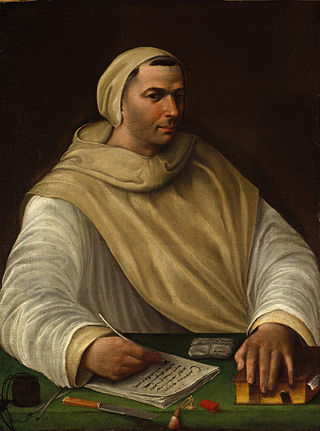
The Olivetans, formally known as the Order of Our Lady of Mount Olivet, are a monastic order. They were founded in 1313 and recognised in 1344. They use the Rule of Saint Benedict and are a member of the Benedictine Confederation, where they are also known as the Olivetan Congregation, but are distinguished from the Benedictines in their white habit and centralized organisation. They use the post-nominals 'OSB Oliv'.
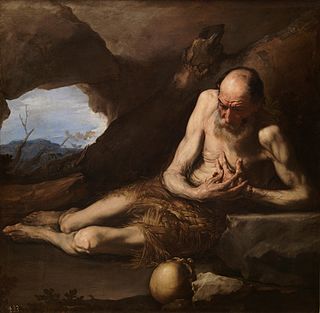
Paul of Thebes, commonly known as Paul the First Hermit or Paul the Anchorite, was an Egyptian saint regarded as the first Christian hermit and grazer, who was claimed to have lived alone in the desert of Thebes, Roman Egypt from the age of sixteen to the age of one hundred and thirteen years old. He was canonized in 491 by Pope Gelasius I, and is venerated as a saint by the Catholic Church, Eastern Orthodox Church, and Oriental Orthodox Churches.
The Canons Regular of St. Augustine are priests who live in community under a rule and are generally organised into religious orders, differing from both secular canons and other forms of religious life, such as clerics regular, designated by a partly similar terminology. As religious communities, they have laybrothers as part of the community.

The Hospital Brothers of Saint Anthony, Order of Saint Anthony or Canons Regular of Saint Anthony of Vienne, also Antonines or Antonites, were a congregation in the Roman Catholic church, founded in c. 1095, with the purpose of caring for those suffering from the common medieval disease of Saint Anthony's fire. The mother abbey was the abbey of Saint-Antoine-l'Abbaye.
The Third Order of Saint Francis is a third order in the Franciscan tradition of Christianity, founded by the medieval Italian Catholic friar Francis of Assisi.

The Abbey of Saint Maurice, Agaunum is a Swiss monastery of canons regular in Saint-Maurice, Canton of Valais, which dates from the 6th century. It is situated against a cliff in a section of the road between Geneva and the Simplon Pass. The abbey itself is a territorial abbacy and not part of any diocese. It is best known for its connection to the martyrdom of the Theban Legion, its original practice of perpetual psalmody, and a collection of art and antiquity.

Micy Abbey or the Abbey of Saint-Mesmin, Micy, sometimes referred to as Micy, was a Benedictine abbey near Orléans at the confluence of the Loire and the Loiret, located on the territory of the present commune of Saint-Pryvé-Saint-Mesmin. Since 1939 it has hosted a community of Carmelites.
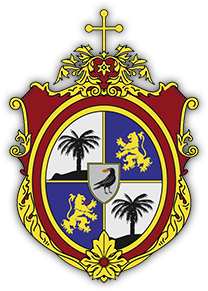
The Order of Saint Paul the First Hermit, commonly called the Pauline Fathers, is a monastic order of the Catholic Church founded in Hungary during the 13th century.
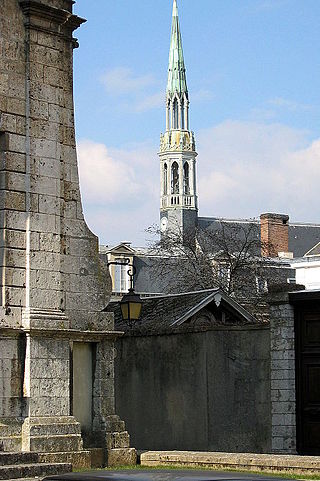
The Congregation of the Sisters of St. Paul of Chartres (SPC) is a Roman Catholic religious apostolic missionary congregation of pontifical right for teaching, nursing, visiting the poor and taking care of orphans, the old and infirm, and the mentally ill. It was founded in Levesville-la-Chenard, France, in 1696.

St. Paul College of Makati, also referred to as SPCM or SPC Makati, is a private, co-educational, Catholic educational institution located at D.M. Rivera Street, Poblacion, Makati, Metro Manila, Philippines, and administered by the Sisters of Saint Paul of Chartres (SPC).
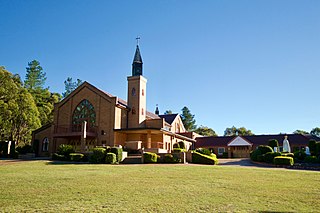
The Shrine of Our Lady of Mercy, commonly known as Penrose Park, is a Catholic place of veneration of the replica of the Our Lady of Jasna Góra, a Black Madonna. The shrine is ministered by the Order of Saint Paul the First Hermit, known as the Pauline Fathers, who have been the custodians of the original Icon of the Black Madonna since 1382. The Shrine of Our Lady of Mercy, Penrose Park, is one of only two shrines dedicated to Our Lady in Australia.
















